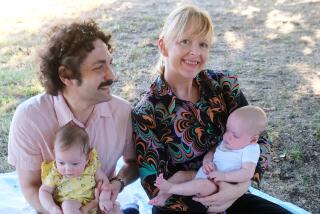NONFICTION - Aug. 28, 1994
- Share via
THE GREEN TREES BEYOND: A Memoir by R. D. Lawrence (Henry Holt: $25; 318 pp.) R.D. Lawrence may be best known for his writings about nature--”The White Puma” was widely hailed a few years ago--but it’s the war scenes that make “The Green Trees Beyond” unforgettable. Lawrence, half-English but born and raised in Spain, joined the anti-Franco forces in 1936, at the age of 14 (he claimed to be 16); two years later, and after recovering from a head wound, he fled under attack across the Pyrenees. That would seem to be enough combat for anyone--but not Lawrence, who subsequently enlisted in the British Army (again lying about his age) only to be seriously wounded a number of times in the course of evacuation from Dunkirk, firefights with Rommel’s tanks in North Africa, and the invasion of Normandy on D-Day. Lawrence’s account of his wartime experiences are shattering, in part because they are so compact, and have the untoward effect of making much of the rest of the book anti-climactic, despite the fact that Lawrence’s later, less bloody exploits in his adoptive Canada would, in another context, be equally absorbing. Homesteading in frigid northern Ontario, befriending local wolf packs, surviving a hurricane, exploring British Columbia’s Inside Passage: Lawrence also holds jobs in journalism, and eventually becomes a prolific writer of books, but it’s clear he works primarily to buy time in which to savor and study the natural world. Lawrence has been called northern Canada’s Gerald Durrell, but he’s no humorist, and is at bottom the better writer; Lawrence goes deep into emotionally difficult territory at times, as when he professes never to have felt love until his mid-30’s, and then only toward his mortally wounded dog. The first half of “The Green Trees Beyond” can justly be compared to Orwell’s “Homage to Catalonia,” but on the whole it’s more like a Picasso portrait put into words, beautiful not in spite of its ungainliness but because of it.
More to Read
Sign up for our Book Club newsletter
Get the latest news, events and more from the Los Angeles Times Book Club, and help us get L.A. reading and talking.
You may occasionally receive promotional content from the Los Angeles Times.










